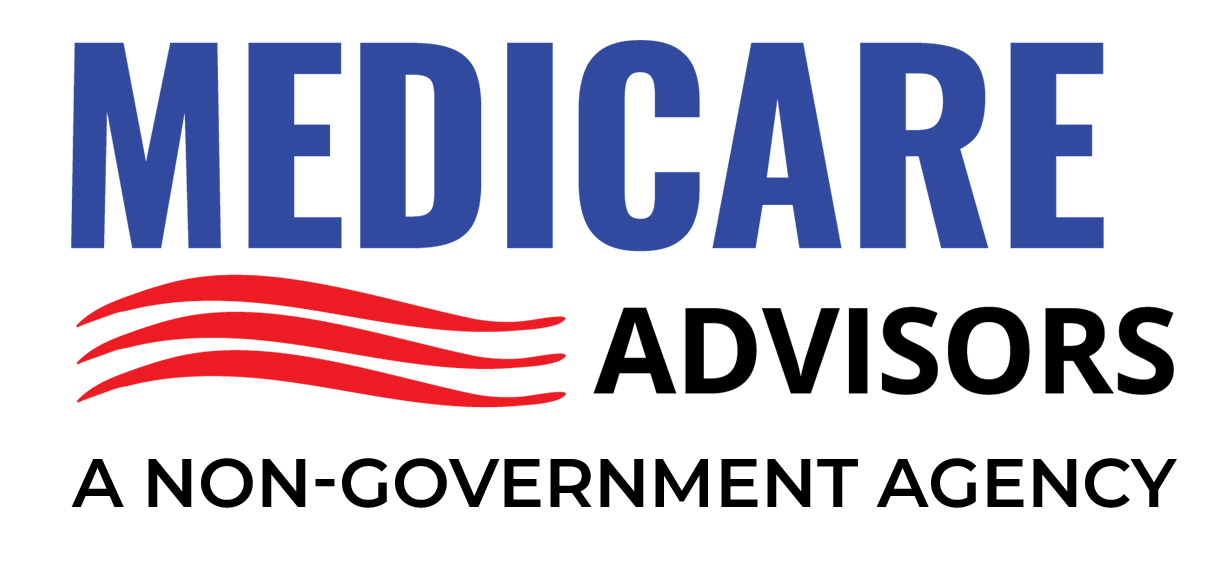Navigating health coverage in your golden years can be confusing, especially with changes that unfold year by year. Many seniors who rely on Medicare realize that Original Medicare (Part A and Part B) doesn’t always pay 100% of their medical bills—there are deductibles, coinsurance, and copayments. That’s where Medicare Supplement Plans (also known as Medigap plans) step in to fill the gaps. As we head toward 2025, it’s essential to understand what Medicare Supplement Plans 2025 could look like, how they benefit seniors, and which might be the best Medicare Supplement plans 2025 for your specific needs.
“In my conversations, many seniors aren’t fully aware of just how crucial the right Medigap plan can be,” says Henry Beltran, the owner of Medicare Advisors. “Selecting a plan is about more than covering a few doctor visits. It can be a lifeline for financial security.”
Below, we’ll explore how Medicare Supplement Plans function, the key updates or expectations for 2025, reviews from real beneficiaries, potential drawbacks to watch out for, and everything else you need to make an informed decision. Let’s take this step by step.
Understanding Medicare Supplement Plans
Medigap policies are insurance policies sold by private insurance companies to help cover some of the costs Original Medicare doesn’t, such as coinsurance, copayments, and deductibles. There are multiple standardized Medigap plans—labeled A, B, C, D, F, G, K, L, M, and N. Here’s a quick refresher:
• Plan A: Covers hospital coinsurance and extends coverage for hospital days up to 365 days after Medicare benefits end, plus Part B coinsurance or copayments.
• Plan B: Includes everything in Plan A plus the Part A deductible.
• Plan C: Covers the Part B deductible (no longer available to those newly eligible for Medicare after January 1, 2020).
• Plan D: Similar to C but does not pay the Part B deductible.
• Plan F: The most comprehensive plan, covering the Part B deductible; also no longer available to new enrollees after 2020.
• Plan G: Almost identical to Plan F but does not cover the Part B deductible.
• Plan K, L, M, N: Each offers a varying level of cost-sharing, sometimes with lower monthly premiums in exchange for higher out-of-pocket costs.
Original Medicare alone can leave you on the hook for 20% coinsurance for outpatient services (Part B). For big-ticket items like surgeries, ongoing treatment for chronic conditions, or costly durable medical equipment, that 20% can balloon quickly. Medigap helps ensure you don’t face overwhelming financial burdens.
Why Medicare Supplement Plans Matter in 2025
Health policy evolves. But we do have a sense of how Medigap coverage typically continues to adapt to changes in Medicare’s regulations, deductibles, and out-of-pocket limits.
Key points heading into 2025:
- No Drastic Structural Overhaul: While legislative bills can pop up now and then, most experts anticipate no earth-shattering changes in the fundamental structure of Medigap plans. Instead, the standardized nature of these plans remains, but monthly premiums may reflect inflation and rising healthcare costs.
- Continued Ineligibility for Plan C and F: If you became eligible for Medicare on or after January 1, 2020, you cannot purchase Medigap Plans C or F. This rule isn’t expected to change for 2025. Many seniors who previously had these plans get to keep them, but new beneficiaries may not enroll in them.
- Growth of Plan G and Plan N: In recent years, Plans G and N have grown in popularity. Plan G offers nearly full coverage except for the Part B deductible, while Plan N offers lower premiums in exchange for copays and potential Part B excess charges in certain states.
Find Medicare Plans in 3 Easy Steps
We can help get up to $0 monthly premium Medicare plans
“People who want robust coverage at a fair monthly premium often turn to Plan G,” explains Henry Beltran. “But if you’re healthy, Plan N can be cheaper while still providing a high level of coverage.”
What’s Unique About Medicare Supplement Plans 2025
Because Medigap is standardized, you won’t find major differences in coverage if you move from one insurer to another for the same lettered plan. However, the cost, added perks (like telehealth membership or discount programs), and underwriting processes can differ.
Potential Trends in 2025:
- Premium Adjustments: Expect modest premium increases as healthcare costs continue to rise.
- Telehealth Integration: Some insurers may bundle telehealth consultations or wellness programs with a Medigap plan for added value.
- State-Level Differences: Certain states like Massachusetts, Minnesota, and Wisconsin have different standardized plans. Always check local specifics.
- Underwriting Changes: Insurers in some states might offer new special enrollment windows or relaxed underwriting if local legislation changes.
Pros & Cons of Medicare Supplement Plans in 2025
Like any insurance product, Medigap has upsides and potential drawbacks:
Strengths:
- Predictable Costs: No 20% coinsurance. Once you pay your monthly premium and meet the Part B deductible (if your plan requires it), many services become fully covered.
- Nationwide Access: Any provider that accepts Medicare also accepts your Medigap coverage. No networks or referrals needed.
- Coverage Abroad (Some Plans): Certain plans (e.g., Plan G, Plan N, Plan F) may offer limited coverage for emergency care during foreign travel.
Potential Drawbacks:
- Monthly Premiums: The more comprehensive the plan (e.g., G), the higher the premium.
- Not Part of Medicare Advantage: Medigap doesn’t bundle in extra perks like dental or vision. You need a separate Part D plan for prescription drugs.
- No Guarantee to Switch Later: Outside your Medigap Open Enrollment Period (or guaranteed issue rights), you might be denied coverage or charged more if you have pre-existing conditions.
Seniors should weigh the stability and broad coverage of Medigap against its monthly premiums and the lack of additional perks that sometimes come with Medicare Advantage.
Comparing Medicare Supplement Plans: A Quick Review
The best Medicare Supplement plans 2025 might revolve around a few major contenders:
• Plan G
- Covers all Part A and Part B coinsurance, including hospital, hospice care, and skilled nursing facility coinsurance.
- Does not cover the Part B deductible.
- Perfect if you want near-total coverage and don’t mind paying the annual deductible for Part B.
• Plan N
- Generally cheaper monthly premium than Plan G.
- Requires copays for some doctor office and ER visits.
- Doesn’t cover Part B excess charges (in states that allow them).
• High-Deductible Plan G
- Identical benefits to Plan G but with a high deductible (over $2,700 in recent years, with exact amounts adjusting annually).
- Much lower monthly premiums, but you bear more of the initial healthcare costs until you meet that deductible.
• Plan F (closed to new enrollees if eligible for Medicare after 1/1/2020)
- Covers everything, including the Part B deductible.
- Seniors who had Plan F before 2020 can keep it. Premiums can be higher, and it’s still an excellent option if you have it.
“Sometimes people get stuck on whether Plan F or Plan G is better,” says Henry Beltran. “But if you’re new to Medicare after 2020, you won’t even be able to pick F. So that question might be moot.”
How to Enroll in a Medicare Supplement Plan in 2025
- Enroll in Medicare Parts A and B
- You must be enrolled in Original Medicare before obtaining a Medigap plan.
- Best Time: Medigap Open Enrollment Period
- This is the six-month window starting the month you turn 65 and are enrolled in Part B. During this time, you have guaranteed issue rights—no medical underwriting, no denial based on health.
- Medical Underwriting
- If you miss your open enrollment, you can be asked health questions, charged higher premiums, or denied coverage based on pre-existing conditions.
- Replacing One Medigap Policy with Another
- You can do it, but be cautious. Make sure you won’t be declined for the new policy before canceling your old one.
Find Medicare Plans in 3 Easy Steps
We can help get up to $0 monthly premium Medicare plans
Potential Cost Implications for 2025
While we can’t predict exact premiums, industry experts suggest that 2025 may bring incremental premium increases for both Plan G and Plan N. The rising cost of healthcare services, inflation, and an aging population all contribute to this shift.
Factors that impact your premium:
- Age: Attained-age policies may increase premiums as you get older.
- Location: Different states and zip codes have different rates.
- Tobacco Use: Smokers typically pay more.
- Gender: Some insurers price differently for men vs. women.
“Some seniors doesn’t realize how much location or even smoking status can raise their monthly premiums,” Henry Beltran comments. “It’s always best to compare quotes from multiple companies.”
People Are Always Asking…
We get so many questions about Medicare Supplement Plans:
- “Is Plan G still the most comprehensive plan for new enrollees?”
- “Do I get coverage for prescription drugs with Medigap?”
- “If I move to another state, do I need a new Medigap policy?”
- “What if I have retiree coverage from my former employer?”
We’ll address these queries below in the F&Q section so you can make sense of the best approach for your situation. But yes, Plan G is widely regarded as the best full-coverage option for those newly eligible for Medicare.
Coverage for Prescription Drugs
Since 2006, Medigap plans sold to new enrollees no longer offer prescription drug coverage. You will need a separate Medicare Part D plan for that.
Key tips: • Carefully review the formulary of any Part D plan to ensure it covers your medications at a reasonable cost.
• Check for restrictions like prior authorization, step therapy, or quantity limits.
• Even if you don’t take many drugs now, enrolling on time can avoid late enrollment penalties.
Potential Drawbacks of Medicare Supplement Plans vs. Medicare Advantage
While Medigap offers broad coverage and nationwide provider access, it isn’t the perfect match for everyone. Some people prefer Medicare Advantage (Part C) because they can get additional benefits (vision, dental, gym memberships) and sometimes pay a $0 premium. But there are trade-offs:
Medicare Supplement Plans
- Pros: Nationwide acceptance, fewer out-of-pocket costs, no primary care physician referrals needed.
- Cons: Generally higher premiums, no built-in Part D coverage, no extra services like dental/vision.
Medicare Advantage Plans
- Pros: Often lower or zero premiums, bundled Part D, extra perks.
- Cons: Potential network restrictions (HMO or PPO), out-of-pocket maximum can be high, possible need for referrals.
“Don’t ignore that you might face higher out-of-pocket costs for each hospital stay or specialist visit with certain Advantage plans,” Henry Beltran warns. “Make sure to read all the fine print.”
Reviews From Real Seniors
Alice, 72: “I have Plan G. It’s so easy—every time I see my doctor or go for lab tests, I’m hardly ever billed anything extra. The premium is a bit high, but at my age, I prefer peace of mind.”
Bob, 75: “I stuck with my old Plan F. My premium is a tad more each year, but it covers everything, including that Part B deductible. I don’t want to fuss with changes.”
Teresa, 68: “I tried Plan N to save on the monthly premium. The copays for doctor visits don’t bother me, but I do watch out for potential excess charges. Luckily, my state doesn’t allow them.”
Common Human Mistakes When Choosing a Medigap Plan
- Forgetting the Part D: Some seniors sign up for a Medigap plan but delay enrolling in Part D, not realizing they’ll face a penalty later.
- Not Checking Underwriting Requirements: If you apply outside your open enrollment, you could get denied or pay more.
- Assuming Plan F is Still Open: If you became eligible for Medicare after 2020, you can’t buy Plan F (or Plan C).
- Ignoring Rate Increases: A plan may look cheap at 65 but can skyrocket in cost at 75 if it’s an attained-age policy.
- Misinterpreting Out-of-Pocket: Some folks think Plan G includes the Part B deductible. It doesn’t, but it covers everything else.
Making Sense of Medigap Costs for 2025
Medigap plans come from private insurers, and each company sets its own premiums:
Three pricing methods often used by insurers:
- Community-rated: Everyone pays the same premium, regardless of age.
- Issue-age-rated: Your premium is based on your age when you buy the policy; it won’t go up because of your age, but might still rise due to inflation.
- Attained-age-rated: Premiums start lower but increase as you grow older.
Tip: Always ask an insurer how they price policies. A plan that’s cheap at 65 but is attained-age-rated might become quite expensive by the time you’re in your late 70s or early 80s.
How to Compare the Best Medicare Supplement Plans 2025
• Assess Coverage Needs: Are you dealing with chronic conditions requiring frequent doctor visits or hospital stays? You might prefer the more comprehensive coverage of Plan G.
• Budget: If you’re on a tight fixed income, Plan N or a high-deductible Plan G can help you save on premiums.
• Local Laws: Some states (like Connecticut, New York, Washington) have guaranteed issue rights year-round or allow you to change plans without underwriting in specific windows.
• Customer Reviews: Look at how insurers handle claims, customer service, and rate increases.
“When people come to me saying, ‘I just want the best Medicare Supplement plans 2025,’ I always encourage them to define best for them personally,” shares Henry Beltran. “Sometimes best means lowest premium. Other times it means the fullest coverage available.”
Plan N vs. Plan G: Which Will Dominate in 2025?
Plan G is considered the new gold standard for full coverage among newly eligible beneficiaries (since Plan F closed for new members).
Plan N is a good middle ground:
- You’ll pay copays for doctor visits (often up to $20) and ER visits (up to $50).
- You could face Part B excess charges if your doctor doesn’t accept “assignment.” (Note: Some states, like Pennsylvania or Ohio, rarely see doctors charging excess fees. Other states, it might be more common.)
“Plan N is getting more traction from healthy seniors,” says Henry Beltran. “But if you see the doc a lot or worry about big bills, Plan G might offer stronger coverage.”
Find Medicare Plans in 3 Easy Steps
We can help get up to $0 monthly premium Medicare plans
Medicare SELECT: A Different Kind of Supplement
For those wanting a lower premium, Medicare SELECT plans are an option. They’re the same lettered plans (e.g., G or N), but with a network of providers. You must use hospitals and specific networks (except in emergency situations). The trade-off is typically a cheaper monthly premium compared to the standard version.
Potential pitfalls: If you travel often or want freedom to use any hospital, Medicare SELECT might not be ideal.
Future Legislative Considerations for 2025 and Beyond
While there’s no definitive plan to overhaul Medigap in 2025, be aware that:
- Congress could propose legislation affecting Medigap cost-sharing.
- There’s perennial talk about reintroducing coverage for the Part B deductible in newly structured plans, but no official changes have been confirmed.
- Some states might continue to pass their own Medigap regulations to protect seniors with pre-existing conditions or to simplify enrollment.
“I keep an eye on legislative developments,” Henry Beltran notes. “But typically, the biggest changes come from small steps over time rather than massive overhauls.”
Will Plan F Premiums Keep Rising?
For those who’ve been grandfathered into Plan F, a common worry is that as the pool of new enrollees shrinks (since it’s closed to newcomers), the average age in that group will go up, leading to rising premiums. Indeed, some seniors have seen this pattern.
If you already have Plan F and it’s still affordable, sticking with it can be a fine choice. If your premium’s become too high, though, you might consider switching to a Plan G—assuming you pass underwriting if you’re not in an open enrollment or guaranteed issue situation.
A Step-by-Step Guide to Finding the Right Medicare Supplement Plan
- Research: Start with an overview of each Medigap plan’s coverage, focusing on Plans G, N, or high-deductible G if you’re newly eligible.
- Check Your Budget: Factor in monthly premiums, potential deductibles, and any copays.
- Get Quotes from Multiple Insurers: Premiums vary widely.
- Ask About Underwriting: If you’re outside the guaranteed issue windows, confirm if your health conditions might affect acceptance or cost.
- Look at Rate Increase Histories: Some companies are known to jack up rates more than others.
- Consider Prescription Drugs: Remember, you’ll need a separate Part D plan.
- Confirm Provider Acceptance: Most doctors nationwide accept all Medigap plans, but if you’re looking at Medicare SELECT, confirm your hospital or doctors are in-network.
Henry Beltran’s Personal Opinion
“As the owner of Medicare Advisors, I often tell clients not to lose sight of the big picture. The best Medicare Supplement plans 2025 must serve your personal healthcare needs. Coverage that was right for your neighbor may not be best for you. Also, watch those premiums! A plan that’s cheap at first might surge later. Do your homework.”
F&Q (Frequently & Questioned)
- Q: Does Medigap cover routine vision or dental care?
A: No. Medigap plans only supplement what Original Medicare covers. You’ll need standalone vision or dental insurance or a Medicare Advantage plan with those extras. - Q: Are Plan C and F totally gone in 2025?
A: Not exactly. If you became Medicare-eligible before January 1, 2020, you can still buy or keep Plan C or F. New beneficiaries after that date can’t enroll in them. - Q: Is Plan N cheaper than Plan G?
A: Typically, yes. But you’ll have copays for certain doctor/ER visits and might face Part B excess charges in some states. - Q: What is the Part B deductible for 2025?
A: The exact amount adjusts yearly. In 2023, it was $226. It may increase slightly each year. - Q: If I move states, can I keep my same Medigap plan?
A: Yes, you can generally keep the same policy, but your premium might change depending on the state’s rating rules. Always notify your insurer. - Q: When is the best time to enroll in a Medigap plan?
A: Your 6-month Medigap open enrollment (starting when you’re 65 and enrolled in Part B) is the best time. After that, you might face underwriting. - Q: Do I need a referral with Medigap to see a specialist?
A: No. Medigap follows Original Medicare guidelines. If Medicare covers it, Medigap helps pay your share—no referral needed. - Q: Is high-deductible Plan G worth it?
A: It can be if you want lower monthly premiums and are comfortable paying a higher deductible. If you need frequent care, though, you might end up paying that deductible quickly.
How Rates Are Expected to Evolve in 2025
There’s no uniform source guaranteeing an exact premium for each Medigap plan in 2025. However, industry watchers expect Plan G to remain the priciest standard plan (besides Plan F) because it’s the most comprehensive. Plan N could see smaller premium hikes but might become more popular, leading to changes in its pricing as well.
Important: With inflation and rising medical costs, even well-established insurers may announce moderate rate increases each year.
Should You Consider Changing Plans in 2025?
If your premiums have gone sky-high or your healthcare needs have changed, shopping around is wise—but be sure you don’t lose guaranteed issue protections. If you’re past your open enrollment and you don’t have a qualifying life event, you might need to undergo underwriting.
Find Medicare Plans in 3 Easy Steps
We can help get up to $0 monthly premium Medicare plans
Real-Life Example: Janet’s Dilemma
Janet, age 70, has Plan G with a well-known insurer. Over five years, her monthly premium rose from $130 to $210. Now she’s wondering if she should switch to Plan N to cut costs. But she’s had a few heart-related issues, and if she applies for a new plan, she might face underwriting or a premium surcharge.
Moral of the story: It’s wise to consider how premiums may change over time, and whether a plan offering more cost-sharing (like Plan N) might be more stable. On the flipside, if Janet frequently visits a cardiologist, those copays could add up.
Reviews & Stories: What Other Seniors Say
Rob, 68: “I did the high-deductible Plan G. My wife said I’m nuts because I have to pay a lot before coverage kicks in. But we’re both healthy, and it’s saved me a bunch in premiums. If I get real sick, I’ll just pay the deductible—fingers crossed that never happens.”
Maria, 73: “Plan N’s been wonderful. I rarely go to the doctor, and when I do, I pay a small copay. It’s still cheaper than Plan G in my area.”
Gerald, 79: “I stuck with Plan F since I was eligible before 2020. But boy, the premium is huge now. I’m too scared of underwriting to try to move to G though. So, I’m just dealing with it.”
Potential Future Innovations
The insurance industry evolves, so new ways to structure or bundle Medigap coverage might surface. For instance, some insurers might experiment with wellness programs, telehealth options, or even extended overseas coverage. But remember, any basic coverage differences are standardized by law, so the lettered plan benefits remain the same.
Steps to Finding the Best Medicare Supplement Plans 2025
- Evaluate Your Health: Chronic conditions vs. occasional doctor visits.
- Look at Your Finances: Monthly premium tolerance vs. possible out-of-pocket costs.
- Plan for the Future: Expect that you might use more healthcare services as you age.
- Compare 3-5 Companies: Don’t settle on the first quote. Premiums vary, even for the same plan.
- Check Underwriting: If you missed your guaranteed period, find out if your health conditions might lead to a denial or rate-up.
- Seek Guidance: A licensed broker or a knowledgeable friend can help clarify your options.
A Caution About Excess Charges
Part B excess charges can happen if your doctor doesn’t accept Medicare assignment and charges up to 15% above the approved amount. Plans G and F cover these charges, Plan N does not. If you live in a state like Connecticut, Massachusetts, Minnesota, New York, Ohio, Pennsylvania, Rhode Island, or Vermont, physicians often can’t levy excess charges or seldom do. So Plan N might be safe there. But always check your local rules.
Medicare Supplement Plans vs. Workplace Retiree Coverage
Some seniors come into Medicare with retiree coverage from a former employer. Decide if it makes sense to keep that coverage or if you can switch to Medigap. Occasionally, employer coverage is more expensive or less comprehensive than a Medigap policy, but you must weigh all the details—network coverage, prescription benefits, spousal coverage, etc.
Henry Beltran’s Quick Tip
“Always compare your retiree plan’s premiums and benefits to the best Medicare Supplement plans 2025. I’ve seen folks overpay or get subpar coverage because they assume their retiree plan is automatically better.”
Frequently Overlooked Considerations
• Price vs. Financial Security: Saving $30 a month on premiums might sound great until a major health event occurs.
• Underwriting Windows: If you’re in a guaranteed issue window for any reason, jump on it. It’s a priceless opportunity to get coverage with no health questions asked.
• Plan Switching: Some states have special rules letting you switch Medigap plans once a year without underwriting. Check local laws.
Henry Beltran’s Final Word on 2025
“As we approach 2025, I expect Plan G to continue dominating as the top choice for new beneficiaries. Plan N will also shine for those wanting a slightly cheaper option but can handle copays. The key is to not let confusion paralyze you. A properly chosen plan can truly guard your retirement nest egg.”
Checklist: Preparing for 2025 Medigap Enrollment
- Enroll in Part A and Part B of Medicare first.
- Mark your 6-month Medigap Open Enrollment window in your calendar if you’re turning 65.
- Decide if you want a plan covering Part B excess charges (Plan G or F) or if you’re okay with copays (Plan N).
- Compare at least three insurers.
- Don’t forget a Part D plan for prescription coverage.
- Carefully read policy exclusions or disclaimers.
Conclusion: Charting a Confident Path
Finding the best Medicare Supplement plans 2025 can mean the difference between financial stability and unexpected medical debt. Each year brings new premiums, potential legislative tweaks, and evolving health needs. Don’t let the complexities deter you: a well-researched choice can provide safety, security, and peace of mind.
Take the time now to evaluate your options, consult with professionals, and ensure your coverage in 2025 aligns with your unique health and financial circumstances. And remember, if you have questions, don’t be shy to seek help—there are state health insurance assistance programs (SHIPs), licensed agents, and reputable organizations that can guide you.
References
- Medicare.gov – Medigap (Medicare Supplement Insurance)
- NCOA.org – Understanding Different Types of Medicare Coverage
- CMS.gov – 2025 Medicare Deductible & Coinsurance Projections (Note: Official figures for 2025 may not be published yet, but historical trends can be found here.)





